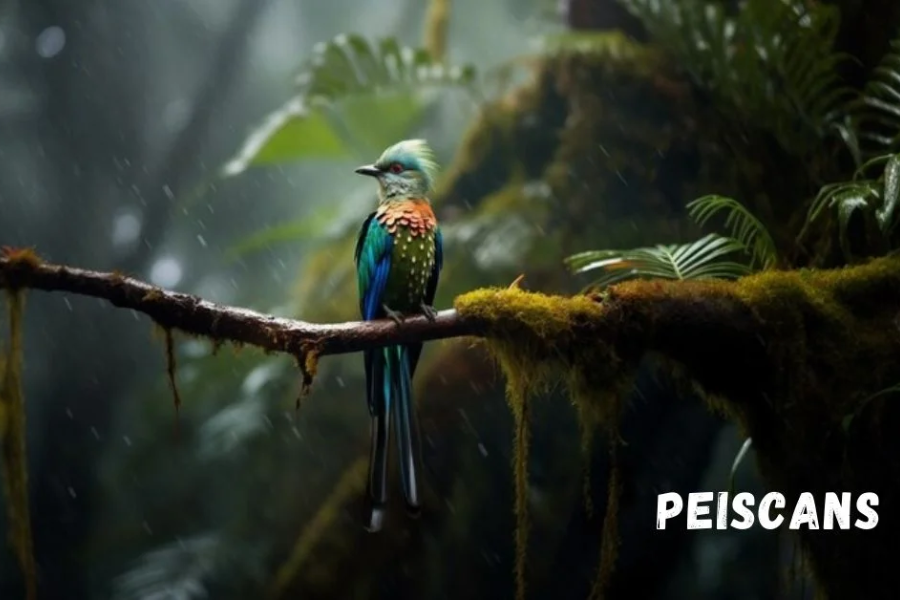Meet the Peiscans: A Beginner’s Guide to These Unique Animals
Welcome to the captivating world of peiscans! These extraordinary creatures are a blend of remarkable physical features and fascinating behaviors that set them apart from other wildlife. Their vibrant colors, unique habitats, and social interactions make them a true wonder in the animal kingdom. If you’ve ever been curious about peiscans and their role in nature, you’re in for a treat. In this guide, we’ll delve into every aspect of these incredible animals, from their physical traits and habitats to their eating habits, social behaviors, and conservation status. Let’s embark on this exciting journey into the world of peiscans!
Physical Characteristics of Peiscans
Peiscans are undoubtedly one of the most eye-catching animals due to their striking physical characteristics. Their streamlined bodies are built for both land and water, making them versatile in diverse environments. What immediately grabs attention is their plumage, which ranges in vibrant colors from deep blues to bright yellows, often with intricate patterns that make each individual unique.
Their long, powerful wings allow them to soar effortlessly through the skies, while their sharp, keen eyesight helps them spot prey from great distances. Peiscans also have webbed feet, which make them excellent swimmers, allowing them to navigate both marshy areas and rocky shorelines with ease. Their beaks, long and slightly curved, are perfect for catching fish, and their overall body structure reflects an evolution designed for survival in different ecosystems.
These physical traits not only help peiscans thrive in their habitats but also make them captivating subjects of study for nature enthusiasts and biologists alike.
Habitat and Distribution of Peiscans
Peiscans are primarily found in coastal regions, where freshwater and saltwater meet, providing them with an ideal environment for hunting and nesting. Their habitats range from temperate to tropical zones, demonstrating their incredible adaptability to different climates. You can find them along riverbanks, coastal cliffs, and sandy shores—places where food is abundant and shelter is available.
In terms of distribution, peiscans can be found across the northern hemisphere and tropical regions, with some populations migrating to warmer waters during colder months. Their migratory behavior is a testament to their resilience and ability to adjust to environmental changes. Whether they are nesting in cliffside colonies or foraging along riverbanks, each region plays a significant role in shaping the lifestyle of peiscans.
Their presence in diverse ecosystems highlights their ability to thrive in multiple environments, making encounters with these birds all the more remarkable.
Diet and Eating Habits of Peiscans
The diet of peiscans is as varied as their habitats. These omnivores feed primarily on small fish, crustaceans, and aquatic plants, allowing them to sustain themselves in both saltwater and freshwater environments. Their ability to hunt and scavenge gives them a distinct advantage over other species that may rely solely on one food source.
Peiscans employ a fascinating hunting technique—they dive underwater to catch fish using their keen eyesight to spot prey from afar. This remarkable ability to see both above and below water helps them target meals with precision. In addition to active hunting, they aren’t above scavenging when the opportunity presents itself, sometimes even stealing food from other animals.
Seasonal shifts also influence their diet. During times when certain food sources are scarce, peiscans adapt by shifting their focus to what is available, showcasing their remarkable flexibility in surviving varied conditions.
Behaviors and Social Interactions
Peiscans are social creatures with intricate behaviors that demonstrate their intelligence and emotional depth. They often live in small groups, where communication through vocalizations and body language plays a crucial role in maintaining group harmony. Their vocal calls can be both functional—alerting others of danger—or used in social bonding.
Playfulness is a key aspect of peiscan behavior. They often engage in playful chases or mock fights, not just for fun but also to strengthen group bonds. These interactions are essential in fostering a cooperative dynamic, especially when it comes to hunting or defending their territory.
Despite their cooperative nature, peiscans can be aggressive when it comes to securing resources. Dominant individuals within a group establish hierarchies, controlling access to the best feeding grounds.This behavior ensures that the strongest members of the group maintain their position, while others may have to wait their turn.
In caring for their young, peiscans show remarkable cooperation. Both parents take turns feeding and protecting the chicks, ensuring that the next generation is well-equipped with survival skills. These nurturing behaviors highlight the importance of group dynamics in their social structure.
Reproduction and Life Cycle of Peiscans
Peiscans follow a fascinating reproductive cycle, beginning with elaborate courtship rituals. Males showcase their vibrant plumage and perform distinctive calls to attract potential mates. These displays are crucial in establishing pair bonds, and they can last for several minutes, mesmerizing their chosen female.
Once a pair is established, the female typically lays three to five eggs in a well-hidden nest, often in a location that offers protection from predators—whether that be among dense vegetation or rocky crevices. The incubation period lasts around three weeks, after which the chicks hatch, fully reliant on their parents for food and protection.
Both parents play an active role in raising the chicks, ensuring they are fed and kept safe during their vulnerable early days. Peiscan chicks grow rapidly, and within six weeks, they are ready to fledge, although they continue to rely on their parents for guidance as they learn to navigate their environment.
Threats and Conservation Status
Despite their resilience and adaptability, peiscans face several significant threats that endanger their populations. Habitat loss is perhaps the most pressing issue, as urban development and agricultural expansion encroach on the wetlands and lakes they depend on for breeding and feeding.
Pollution also presents a major problem. Contaminants in the water can cause health issues for peiscans, further threatening their populations. Climate change, too, has a profound impact on their migratory patterns and the availability of food sources.
In some regions, hunting remains an issue, with illegal poaching further diminishing peiscan numbers despite existing regulations.
Conservation efforts, however, are underway to address these issues. Organizations around the world are working on habitat restoration projects and raising awareness about the importance of preserving these unique animals. Monitoring programs help track population trends, and legal protections have been put in place to ensure peiscans and their habitats remain intact for future generations.
How to Observe Peiscans in the Wild
For those eager to observe peiscans in their natural habitat, there are a few key tips to keep in mind. First, it’s essential to choose the right location—peiscans thrive near freshwater bodies, so look for lakes, rivers, or wetlands in areas where they are known to inhabit.
Timing is everything. Early mornings and late afternoons are the best times to spot peiscans, as they are most active during these hours. Be sure to bring binoculars to get a closer view of their graceful movements without disturbing them.
Patience is crucial when watching wildlife. Find a quiet spot, stay still, and be prepared to wait. Peiscans are shy creatures, and minimizing your movements increases your chances of observing them in their natural behaviors, such as hunting or interacting with their group.
Respecting their environment is also important. Keep a safe distance, avoid making loud noises, and enjoy the experience of watching these magnificent creatures without disrupting their natural routine.
Fun Facts about Peiscans
Peiscans are full of surprises! One of their most interesting traits is their ability to change the color of their plumage based on their environment and mood. This color-shifting ability helps them either blend in with their surroundings or express emotions, making them truly unique in the animal kingdom.
Their social structure is equally intriguing. Peiscans often work together in cooperative hunting practices, ensuring that each member of the group gets its share of food. Their tight-knit communities foster a sense of unity that helps them survive in the wild.
Peiscans also have an exceptional sense of hearing, allowing them to detect even the faintest sounds from long distances. This helps them both find prey and avoid potential dangers.
These creatures are also playful, often seen surfing on waves or performing aerial acrobatics during mating displays. Observers are often left in awe of their gracefulness and agility.
Finally, peiscans boast impressive longevity, with some individuals living up to 20 years in the wild.
Conclusion
Peiscans are truly fascinating creatures that capture the imagination with their unique traits, behaviors, and adaptability. They play an essential role in their ecosystems, contributing to the delicate balance of nature. However, they also face significant threats that require our attention and action.
As more people become aware of the importance of preserving these animals and their habitats, conservation efforts are becoming more critical. By supporting these initiatives, we can help protect peiscans for future generations to enjoy.
Whether you’re a nature enthusiast or simply curious about the animal kingdom, learning about peiscans provides a glimpse into the wonders of biodiversity and reminds us of the beauty that exists in the natural world.
Explore comprehensive insights and engaging articles on your favorite topics at info discovers.






